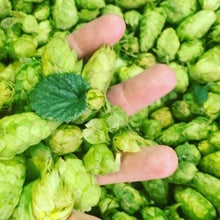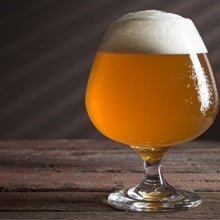Porters and Stouts: What’s the difference?

It is one of the biggest beer questions of all time and one that we get asked by customers time and time again. Like most things with beer varieties, there is no straight-forward explanation. To find the answer to this age-old question, we need to delve into the history of how Stout arose from Porter, which is fairly similar and frequently debated.
Porter was founded much earlier than Stout. In 18th century London in the middle of the Industrial Revolution; Porters, Seamen and Dock Workers were a large proportion of beer drinkers and were a significant influence on the style of beer produced in London. They preferred a mix of old ale, new ale and weak/mild ale; and this blend produced the world’s first Porter, named after the community that liked to drink it. The resulting beverage was a dark, medium-bodied beer with a rich malt profile and a decent amount of hops. As more brewers began brewing Porter and tweaking the recipe, a new breed was born; the ingredients were altered, and the alcohol content raised and Stout Porters were invented. These Stout Porters became increasingly popular due to their roasty flavour, and the ability for hard workers to get more alcohol out of each pint. Alcohol consumption, however, was a worry for the British Government during the war, and laws were passed which meant that the alcohol percentage on beers was reduced dramatically. Porters became more like 3%, and as Stouts were stronger originally, they only fell to about 5%. This led to a surge in popularity for Stouts, and with porter dropped from the name a bustling new beer category was created.

You can’t mention Stout without talking about Guinness, recognised worldwide as one of the most famous stouts in the world. Originating from Dublin, Ireland, many people will coin the Irish with the creation of Stout. Guinness too, however, started as a Porter, in 1778 before its first Stout was released in the 1840s. Guinness took Stout to the next level, making it a household name and meaning many people associated Stout with an incredibly creamy and rich body. Now one of the most successful alcohol brands in the world, Guinness is brewed in almost 50 countries and is still the top selling alcoholic drink in Ireland. For a true to style Stout, you can buy 6 packs of Guinness.

Jump to the current craft beer situation and the different versions of Stouts and Porters found on the market and you can see why people get confused between the two. There’s now strong Porters, weak Stouts, and everything in between. If you ask a brewer what the difference is between the styles of beer, you are likely to get a hundred different answers. It is generally accepted that Porter uses malted barley, whilst Stout is often darker in colour and primarily uses unmalted roasted barley. This provides the roasty coffee flavour often associated with Stout. Aside from this, there is a huge amount of overlap in the two categories. The Beer Judge Certification Program, used worldwide to classify beer and judging categories, defines the overall impression of a stout as “a very dark, roasty, bitter, creamy ale,” while its overall impression of a Porter is “a substantial, malty dark ale with a complex and flavorful roasty character.” The simple answer really, is that brewers can realistically coin their dark beer whatever term they like.

Here in New Zealand, we are lucky enough to currently have what was crowned as The World’s Best Stout and Porter at the World Beer Awards. Yes, you heard it right – little old New Zealand beat out the likes of Guinness with Cassel’s & Sons Milk Stout taking out the trophy. More than 3500 beers from over 50 countries were entered in the awards, so it’s safe to say the winning brew from Cassel’s deserved it’s top spot. This Milk Stout uses traditional English hops of Green Bullet and Fuggles whilst oat, chocolate and dark malt offer great toasty bitterness and subtle chocolate characters. Offering all the richness and weight of a Stout, without the inflated alcohol and showcasing just how much Stout has changed over the years with the extra additions of oats and creaminess. Or, try Epic’s new Stout in a handy 330ml can format which provides a modern day take on the classic style, with a medium body, creamy texture and a long roasty finish.
If a Porter sounds a bit more up your alley, we recommend grabbing a bottle of the McLeod's Pioneer Porter. McLeod’s are leaders at brewing true to style, high quality beers and this Porter is case in point. Their take on an English-style Brown Porter, this beer is overflowing with a huge list of malts, combined with a classic English Ale strain which imparts the true Porter style of balanced fruity esters, with subtle cocoa and toast on the palate. For something a bit different, Kereru For Greater Justice Coconut Porter hits the spot, a warm inviting Porter, with lovely toasted malt characters, offset by sweet, balancing coconut, without being too heavy.
Stout and Porter isn’t just for drinking alone, they are also known to be the desserts of the beer world, and pair well with a range of foods. If cheese is your thing, a Porter will pair well with a gouda or a cheddar, which will complement the slightly sweeter malt characters. Stout can usually hold up to some stronger flavours, with Imperial Stout especially being a great match for peppery cheeses or any type of blue. The best way to combine your Stout or Porter with food however, is with a classic NZ homemade pie. BBQ like its hot, a NZ chef, created the perfect Panhead Stout Steak & Cheese pie, using Panhead’s Black Top Oat Stout. Forgoing the classic Guinness, Panhead’s creamy Oat Stout adds rounded flavours and underlying roastiness.
So, there you have it. The difference between a Stout and a Porter is ambiguous at best, and open to interpretation. As long as there are craft breweries experimenting with these styles, there will be no set definition for them. Our recommendation – take the brewer’s word for it, and enjoy regardless of what is on the label!



